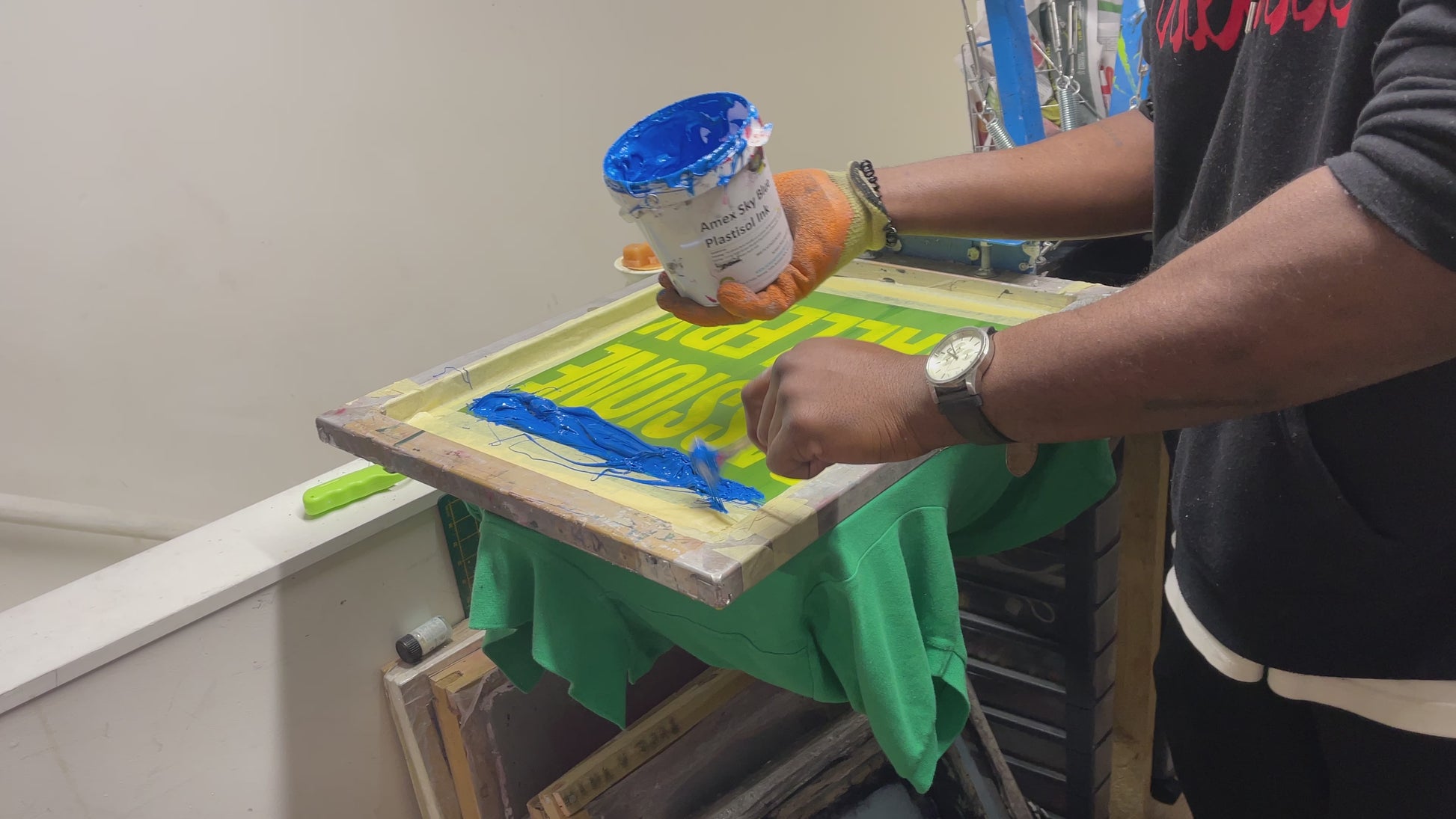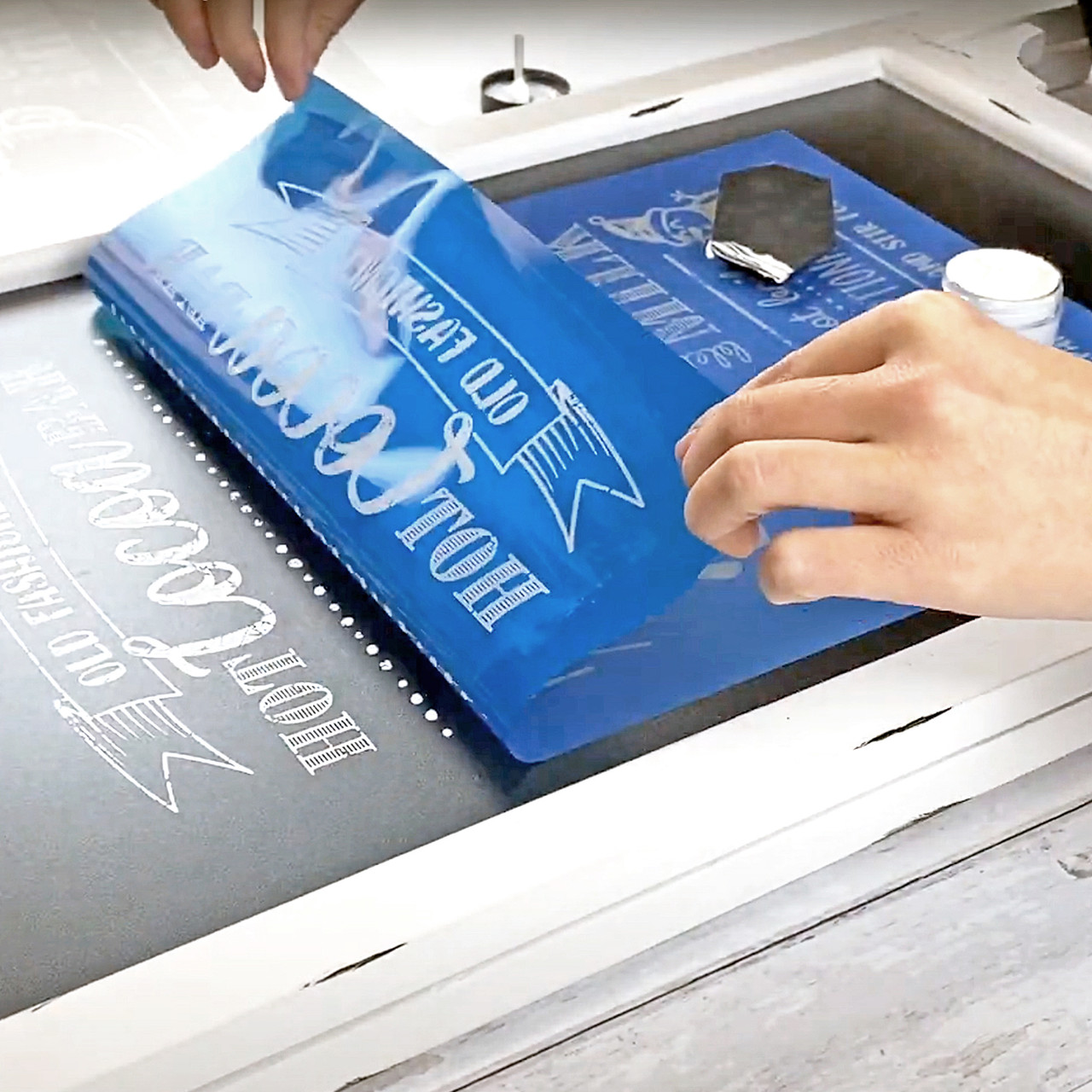Creative T-Shirt Printing Ideas for Small Brands
Creative T-Shirt Printing Ideas for Small Brands
Blog Article
Display Printing Uncovered: Everything You Need to Know Concerning T-Shirt and Garment Printing Methods
Screen printing is an interesting approach that combines art with technique, using countless possibilities for imagination. Prepared to explore the necessary components that make screen publishing an art kind?
The Basics of Display Printing: How It Works
When you plunge into screen printing, you'll find it's both an art and a scientific research. At its core, display printing includes creating a pattern, or screen, that permits ink to pass with only in certain areas.
Placement the screen over the textile, then use a squeegee to press ink through the screen onto the garment. Each step is essential, and grasping them will certainly boost your screen printing skills, changing simple garments right into distinct, expressive pieces.
Kinds of Screen Printing Methods
Once you understand the fundamentals of display printing, it's time to explore the various strategies that can raise your designs. One preferred method is traditional display printing, where ink is pushed with a stenciled screen. This method is fantastic for strong, vivid shades. There's water-based ink printing, which supplies a softer feeling and is eco-friendly, but it needs a various strategy to curing.
If you're aiming for fine details, think about discharge printing. This method eliminates dye from the textile, leaving a soft, classic look. Another option is plastisol printing, recognized for its sturdiness and brilliant colors, making it a favorite for many brand names. Experiment with halftone printing to develop slope impacts and complex layouts. Each technique has its distinct appeal, so don't think twice to try them bent on find what suits your style best!
Essential Tools for Screen Printing
To accomplish magnificent outcomes in display printing, having the best equipment is basic. You'll need a sturdy display printing structure, which holds the mesh that moves your style onto the garment. Next, invest in top quality mops; these are crucial for using ink equally throughout the screen.
Choosing the Right Inks and Materials
When choosing inks and products for display printing, you need to take right into account the sort of ink that works best for your project. Think of textile compatibility to assure your layouts look great and last long. Additionally, discover eco-friendly ink alternatives to make your printing procedure a lot more sustainable.
Types of Screen Inks
Selecting the best screen ink is important for achieving dynamic, resilient prints that satisfy your job's requirements. There are a number of sorts of screen inks to examine. Plastisol ink is prominent for its flexibility and convenience of usage, offering excellent shade opacity on dark textiles. Water-based ink, on the other hand, offers a softer feeling and is green, making it suitable for those aiming to lessen their ecological effect. Discharge inks eliminate dye from the fabric, resulting in a soft, classic appearance however require details handling. Ultimately, specialized inks, such as glow-in-the-dark or metal, can add one-of-a-kind impacts to your designs. Evaluate your job requirements and pick the ink that aligns ideal with your desired end result.

Textile Compatibility Factors To Consider
Comprehending fabric compatibility is essential for accomplishing premium screen prints, specifically because various materials respond distinctively to various inks. Constantly evaluate your inks on example material to guarantee they stick effectively and keep color honesty. Additionally, maintain in mind that fabric weight and appearance can impact the last result, so selecting the ideal ink and material combination is vital for your task's success.
Eco-Friendly Ink Options
Eco-friendly inks are ending up being a preferred choice for screen printers that desire to minimize their environmental influence while maintaining top quality. When selecting inks, think about water-based inks, which are much less damaging and simpler to cleanse up contrasted to conventional solvents.
In addition, search for inks made from renewable sources, such as soy or vegetable-based options. By selecting the appropriate inks and materials, you'll not only produce stunning layouts yet additionally add to an extra sustainable printing procedure. Make the button, and your prints will reflect your dedication to the setting!
Preparing Your Style for Screen Printing

Submit Layout Requirements
To ensure your layout looks vivid and sharp on material, you'll need to pay close focus to file layout needs for display printing. Make sure your design has a transparent background to prevent unwanted white edges on your prints. Keep color modes in mind; CMYK is standard for screen printing, so convert your RGB designs appropriately.
Color Splitting Up Strategies
Color separation is a vital step in preparing your style for screen printing, and mastering it can significantly improve your print quality. You'll need to break your layout right into specific shades, as each color requires a separate display throughout printing. Begin by determining all the colors in your design and develop layers each. You can utilize software application like Adobe Photoshop or Illustrator to separate and different shades properly. Be particular to conserve each layer as a different documents, typically in a format like TIFF or PSD. This precision not only guarantees accurate shade depiction but additionally improves the printing procedure. By taking note of shade splitting up, you'll accomplish expert and vibrant results in your screen-printed garments.
Resolution and Dimension
Accomplishing the most effective lead to display printing begins with assuring your design has the appropriate resolution and dimension. Preferably, your art work needs to be at the very least 300 DPI (dots per inch) for sharp, clear prints. If you utilize reduced resolution, your end product may look pixelated and unprofessional.
When it comes to dimension, consider the measurements of your print area. Layout your artwork to match the final print dimension, preferably producing it in the real dimensions you'll be publishing. By doing this, you'll avoid any type of unexpected scaling problems.
Constantly check your layout in both vector and raster formats. Vector graphics can be scaled without losing top go to my site quality, making them excellent for screen printing. Preparing appropriately will guarantee your style looks impressive on every garment!
Step-by-Step Screen Printing Refine
Display printing is a vibrant procedure that enables you to produce dynamic styles on various surfaces. To get started, you'll need a screen, solution, and your picked ink.
After washing out the unexposed emulsion, your screen prepares. Establish it up on your printing surface and straighten your garment beneath it. Pour ink onto the screen and make use of a squeegee to press the ink via the stencil onto the material. Raise the display meticulously and allow the print dry. Ultimately, treat the ink making use of heat to guarantee resilience. That's it! You have actually successfully display printed your design.
Tips for Successful Display Printing Projects
While you're diving right into your screen printing projects, keep in mind that preparation is key to success. Start by gathering all your products-- inks, garments, mops, and screens. A clean work area helps prevent undesirable errors, so neat up prior to you start.
Next, confirm your artwork is high-resolution and properly sized for your garment. Check your screen for appropriate exposure and tidy it completely to avoid spots. When mixing your inks, follow the manufacturer's standards to attain the right consistency.
During printing, apply also pressure with your squeegee for regular results. Do not rush; take your time to verify each print meets your criteria. After printing, allow your garments dry completely prior to handling or packaging them.
Last but not least, constantly maintain an example of your help future reference. By doing this, you can assess your development and enhance your learn this here now methods with time. Satisfied printing!

Regularly Asked Inquiries
For how long Does It Require To Set up a Screen Printing Work?
Establishing up a display printing job generally takes about 30 mins to an hour. You'll prepare the displays, mix inks, and readjust the press. The time varies based upon complexity and experience, so stay organized!
Can I Publish on Various Textile Keys In Utilizing the Exact Same Method?
Yes, you can print on different material kinds utilizing the exact same strategy, however you'll need to change your settings and inks. Some textiles take in ink in different ways, so exploring warranties the ideal results for each product.
What Are Usual Errors to Avoid in Display Printing?
When display printing, avoid common blunders like making use of the incorrect ink, disregarding correct exposure times, or skipping pre-press checks. Always test your setup and maintain tidy screens to guarantee quality results each time.
Exactly How Can I Properly Clean and Preserve My Screen Printing Devices?
To effectively tidy and maintain your display printing devices, you must consistently wash screens with proper solvents, examine mops for wear, and assure all tools are kept completely dry and dust-free. Uniformity stops expensive repair work and enhances performance.
Is Screen Printing Ecologically Friendly Contrasted to Various Other Techniques?
Display printing can be extra eco pleasant than other methods, especially if you utilize water-based inks and eco-conscious products. By picking sustainable supplies and practices, you minimize waste and decrease your effect on the earth.
Screen Printing Uncovered: Whatever You Required to Know the original source Concerning Tee Shirt and Garment Printing Methods
At its core, display printing involves developing a pattern, or display, that allows ink to pass with just in certain areas. Placement the screen over the textile, then make use of a squeegee to push ink through the screen onto the garment. One prominent approach is traditional screen printing, where ink is pushed with a stenciled display.When selecting inks and products for screen printing, you need to take into account the type of ink that functions finest for your project.
Report this page